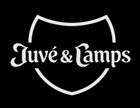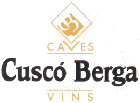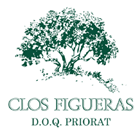Rovellats
by
Kathy and Terry Sullivan
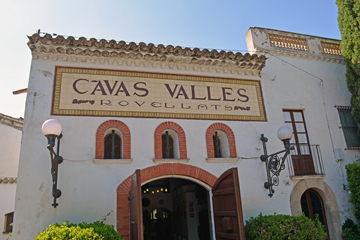 Summary: A visit to Rovellats includes a visit to the aged farmhouse, cellars, wine production area and Art Nouveau gardens. While touring the facility be sure to notice the stair rails that are made of wine bottles. Spend some time sitting in the Art Nouveau gardens, you might even remember the times of F Scott Fitzgerald and the Golden Age.
Summary: A visit to Rovellats includes a visit to the aged farmhouse, cellars, wine production area and Art Nouveau gardens. While touring the facility be sure to notice the stair rails that are made of wine bottles. Spend some time sitting in the Art Nouveau gardens, you might even remember the times of F Scott Fitzgerald and the Golden Age.
Josep Cardona i Valles is the grandson of the original cava producers. Today his sister Ma Rovellats and he share the role of presiders of the winery. Rovellats Cava is one of the oldest cava producers in Spain. The family winery began producing cava in the 1920s.
Today Josep says, “To produce cava you must be a romanticist.” Josep continued to exclaim that, "From the planting of grapes through wine production and sales, you put yourself into it." Cava production allows you to “create a masterpiece for the soul.” Today Rovellats Cava sells about 300,000 bottles of cava and 7,000 bottles of still wines. After gently pressing the grapes for cava production, additional pressing produces juice for still wine production.
During our tour by Josep and Olga Bondar, exports, we learned that the property has been in the Rovellats family for ten centuries. Visitors to the winery can view the family farmhouse that dates back to the fifteenth century. Bodega Josep Vallès Rovira began producing cavas in the 1920s. It was at the Barcelona International Exposition of 1929 that Rovellats won its first award. After such success it was the second generation that began making improvements to the vineyards. The third generation is continuing the love of the land, vineyards and the cavas.
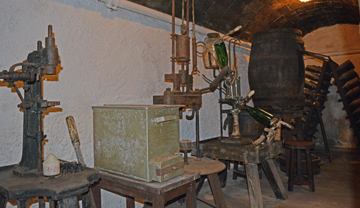 A hall in the masia, or manor house, is a museum hall. In this hall, visitors can view the many wine items and photos that inspire the Rovellats’s family. Tourists will enjoy the display of old keys and ceramic tiles with cute sayings. One tile showed an image of someone drinking in a bar. Olga translated the caption for us, “If you are going to drink until you can not remember, you have to pay first.” A large three-dimensional design above the entrance to the caves and winery portrays the winery’s logo which has an emphasis on Greek mythology.
A hall in the masia, or manor house, is a museum hall. In this hall, visitors can view the many wine items and photos that inspire the Rovellats’s family. Tourists will enjoy the display of old keys and ceramic tiles with cute sayings. One tile showed an image of someone drinking in a bar. Olga translated the caption for us, “If you are going to drink until you can not remember, you have to pay first.” A large three-dimensional design above the entrance to the caves and winery portrays the winery’s logo which has an emphasis on Greek mythology.
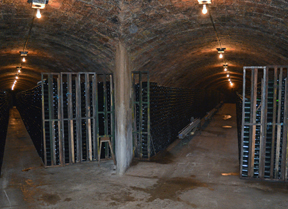 Next we toured an old cellar, built in 1967. The underground cellar is 15 meters (49 feet) underground and maintains a temperature of 13º C (55º F). We stood in the center of the cellar and noted that there were six spokes of tunnels leading from the center. The center is known as la Rotonda. Each spoke of the cave is named such as Cava Vella. The total distance of the cellars reach 1.8 km (1.1 miles). Throughout the cellars, there are cava bottles aging on their sides. This aging will take from months to years depending on the type of cava.
Next we toured an old cellar, built in 1967. The underground cellar is 15 meters (49 feet) underground and maintains a temperature of 13º C (55º F). We stood in the center of the cellar and noted that there were six spokes of tunnels leading from the center. The center is known as la Rotonda. Each spoke of the cave is named such as Cava Vella. The total distance of the cellars reach 1.8 km (1.1 miles). Throughout the cellars, there are cava bottles aging on their sides. This aging will take from months to years depending on the type of cava.
Vineyards
Many of the 200 hectares (494 acres.) of grapevines are between 30 and 60 years old. The old vines are head pruned while the newly planted vines are on a trellis system. Grape varieties include the Spanish indigenous grapes of Xarel.lo, Macabeo, and Parellada. Other varieties include Chardonnay, Cabernet Sauvignon, Merlot, Syrah, and Grenacha. Harvest of the 200 hectares is done by hand.
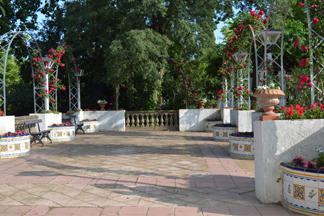 Cavas
Cavas
According to Josep, his theory is to make an easy to drink cava and to make a house-style cava. The coupage or blending of wines for the cavas showcases the winemaker's creativity. The cavas are bottled in standard 750ml bottles and magnums.
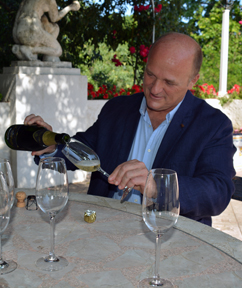 We tasted two cavas in the late afternoon in the beautiful Art Nouveau gardens. Josep (pictured) was happy to pour his cavas. The Brut Nature Grand Reserva 2009 was aged for 61-62 months. The cava was a blend of 30% Macabeo, 55% Xarel.lo and 15% Parellada. Rather than listing the wines in order of percentage, they are listed in order of harvest. The cava was disgorged between January and March 2015 and did not receive a sugar dosage. The wine was yellow with multiple columns of beads forming a mousse on the surface. Notes of apple, citrus and baked bread were noticed. The cava offered a creamy mouthfeel.
We tasted two cavas in the late afternoon in the beautiful Art Nouveau gardens. Josep (pictured) was happy to pour his cavas. The Brut Nature Grand Reserva 2009 was aged for 61-62 months. The cava was a blend of 30% Macabeo, 55% Xarel.lo and 15% Parellada. Rather than listing the wines in order of percentage, they are listed in order of harvest. The cava was disgorged between January and March 2015 and did not receive a sugar dosage. The wine was yellow with multiple columns of beads forming a mousse on the surface. Notes of apple, citrus and baked bread were noticed. The cava offered a creamy mouthfeel.
Masia Segle XV 2007 was aged 86 months. The cava was a blend of 36% Macabeo, 50% Xarel.lo, 9% Parellada and 5% Chardonay. The Masia Segle XV was named after the arch discovered in the manor house dating its construction to the 15th century. This wine was disgorged in the last quarter of 2014. The wine had a few columns of beads forming, a large mousse and a cordon de mousse around the circumference of the surface. The wine offered mineral and freshly baked bread notes with citrus.
While in Spain we also tasted the Brut Imperial Rosé. The red with orange/pink hue cava was 100% Garnacha. It offered grapefruit on the aroma while the taste reminded one of grapefruit, citrus and freshly baked bread. There was fruit and mineral on the finish. The Imperial Reserva 2012 was a light yellow color with multiple beads of bubbles forming a mousse on the surface. The aroma and taste were green apple and mineral. The cava had a nice mouthfeel and fruity finish.
Wine Tourism
Rovellats offers extensive wine tourism opportunities. Wine enthusiasts can tour the vineyards, the Art Nouveau gardens, the masia or farmhouse and a replica of the Chapel of the Virgin of Montserrat. There is also a wine museum to discover along with the production facility where you can learn about cava production.
Contact the winery to make an appointment.
Bodega Rovellats
08731 Sant Martí Sarroca
Catalonia, Spain
GPS: N 41 º 21 ' 14 '' E 1 º 38 ' 50 ''
Article written May 2015
Please support the following.
 |
|||
 |
 |
